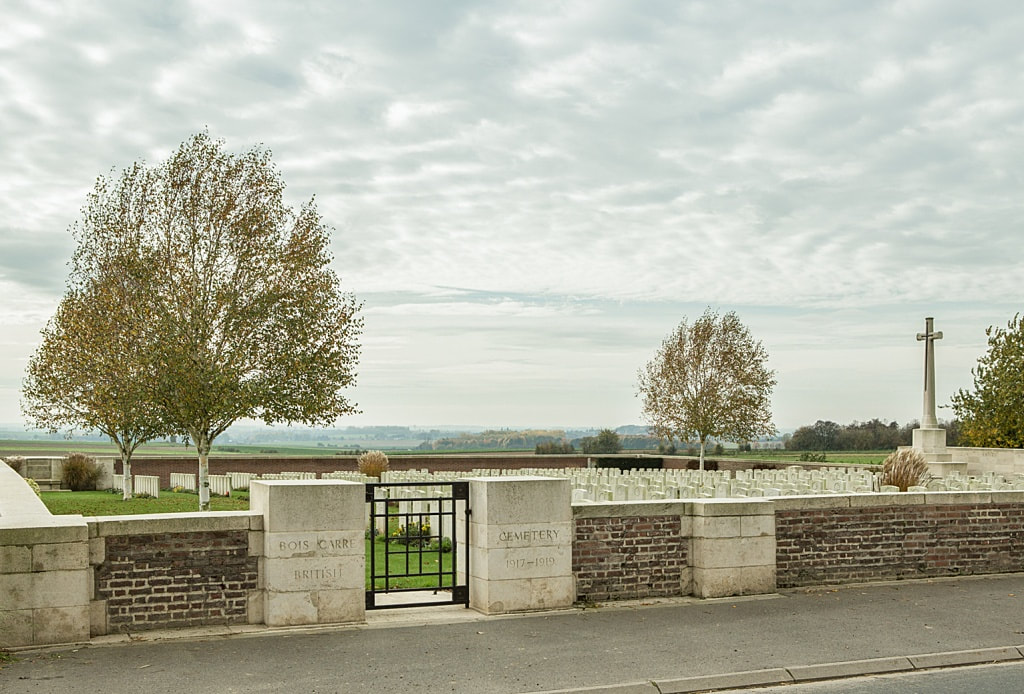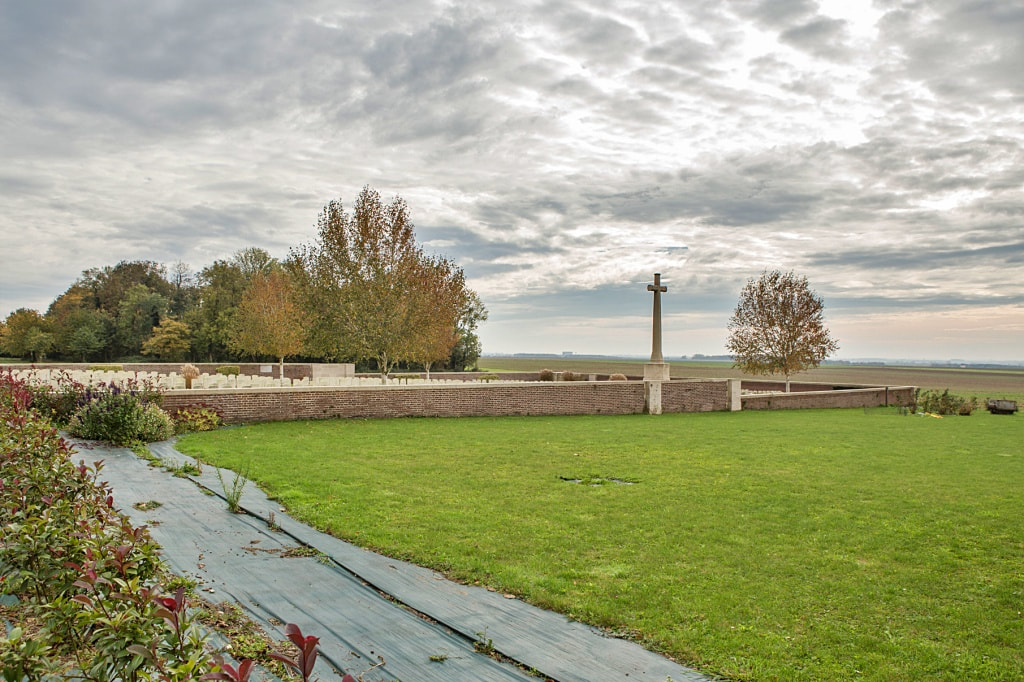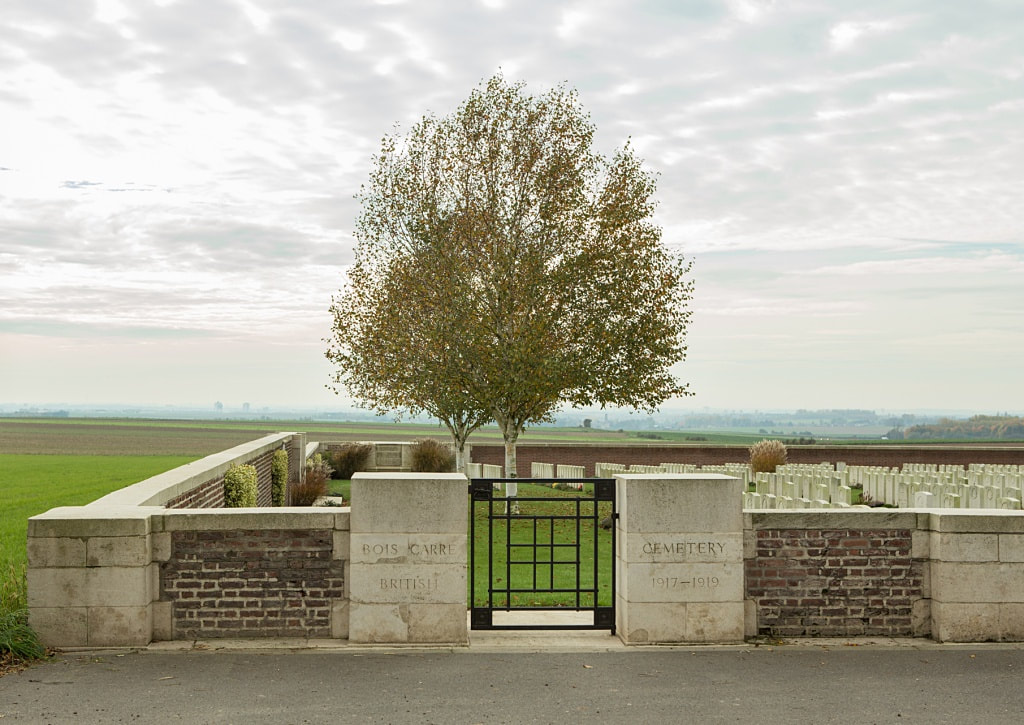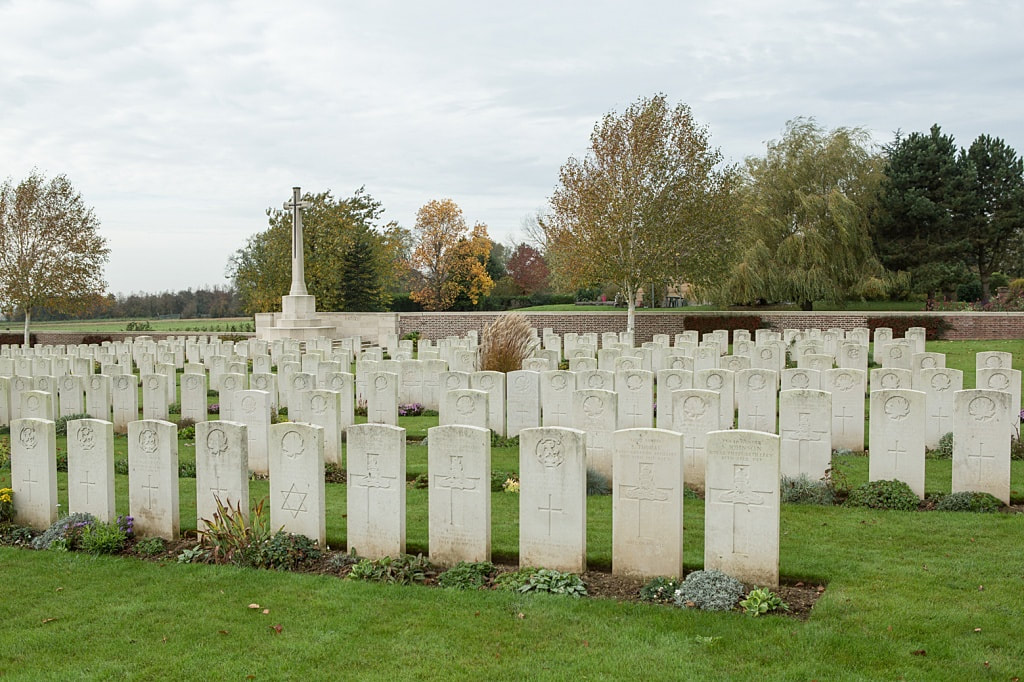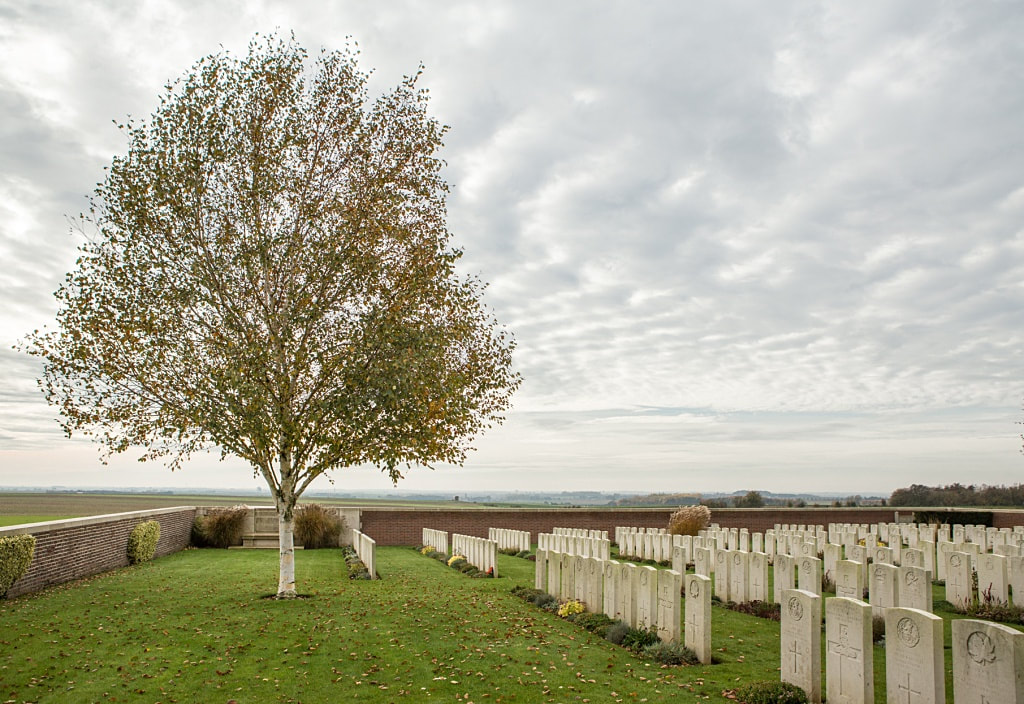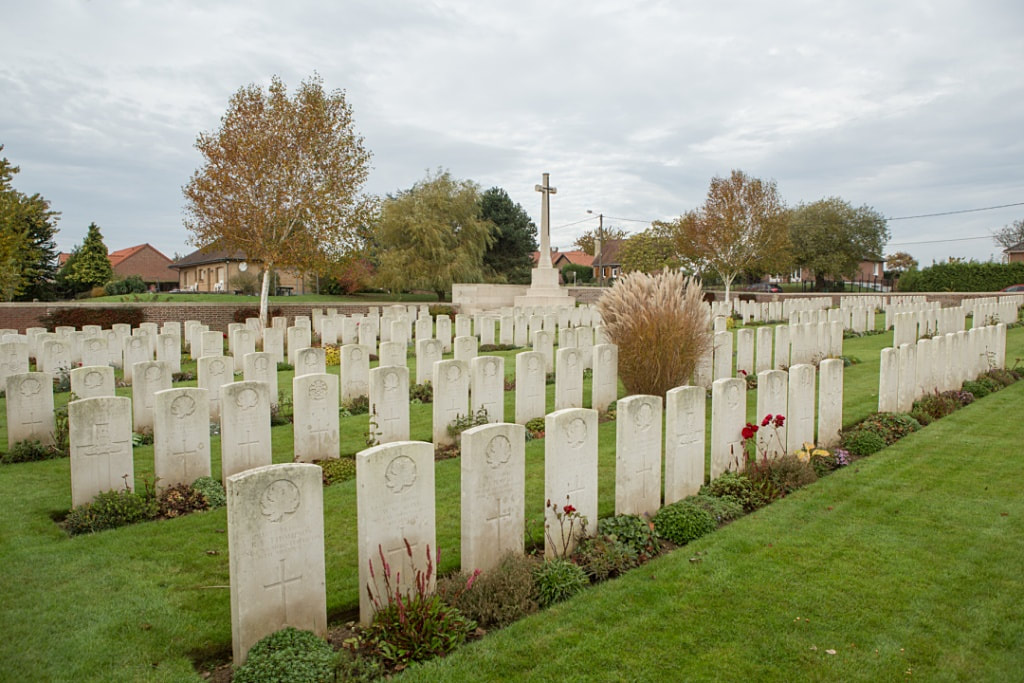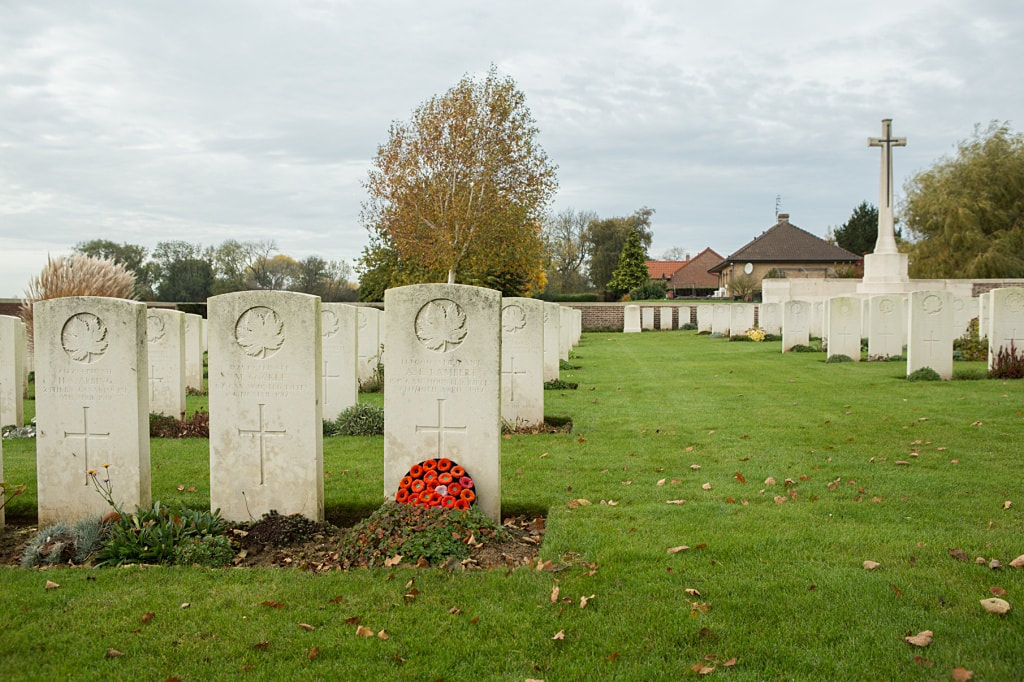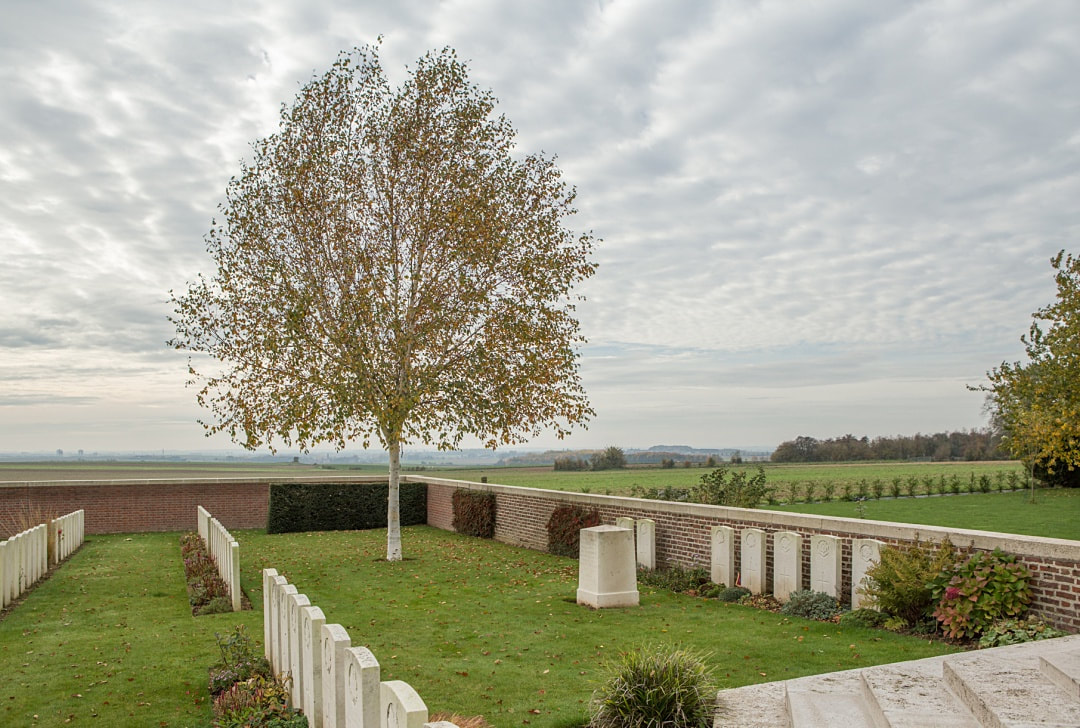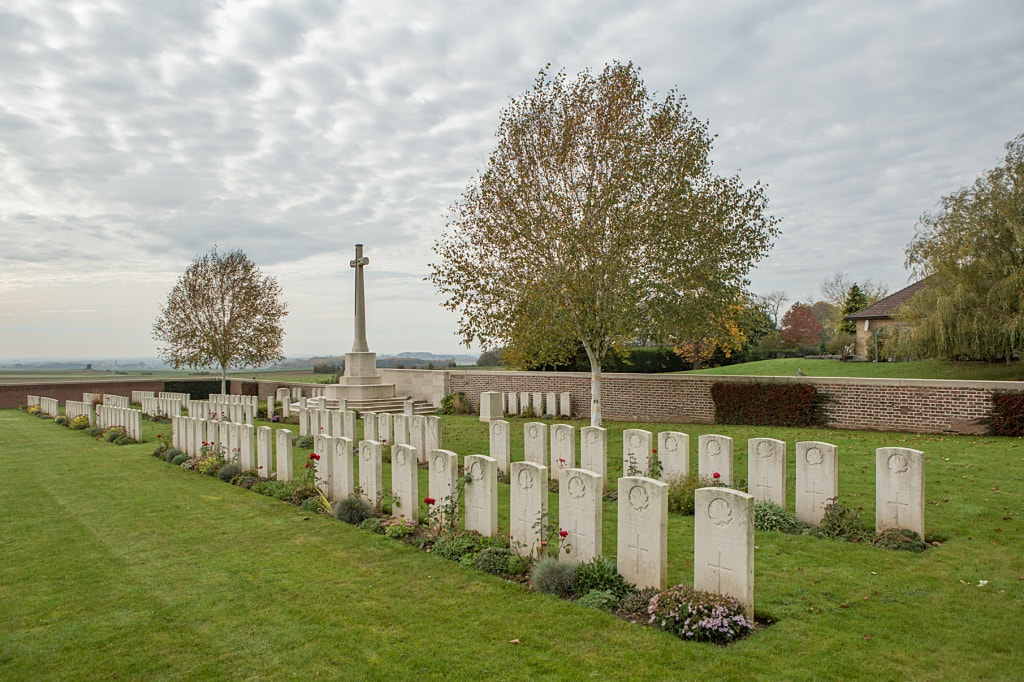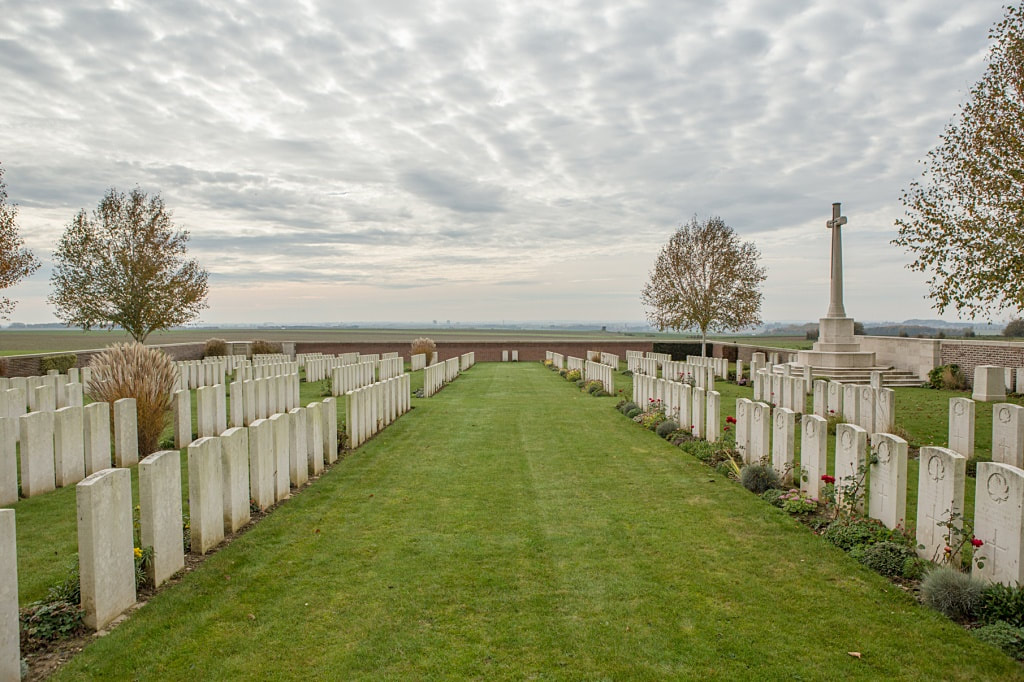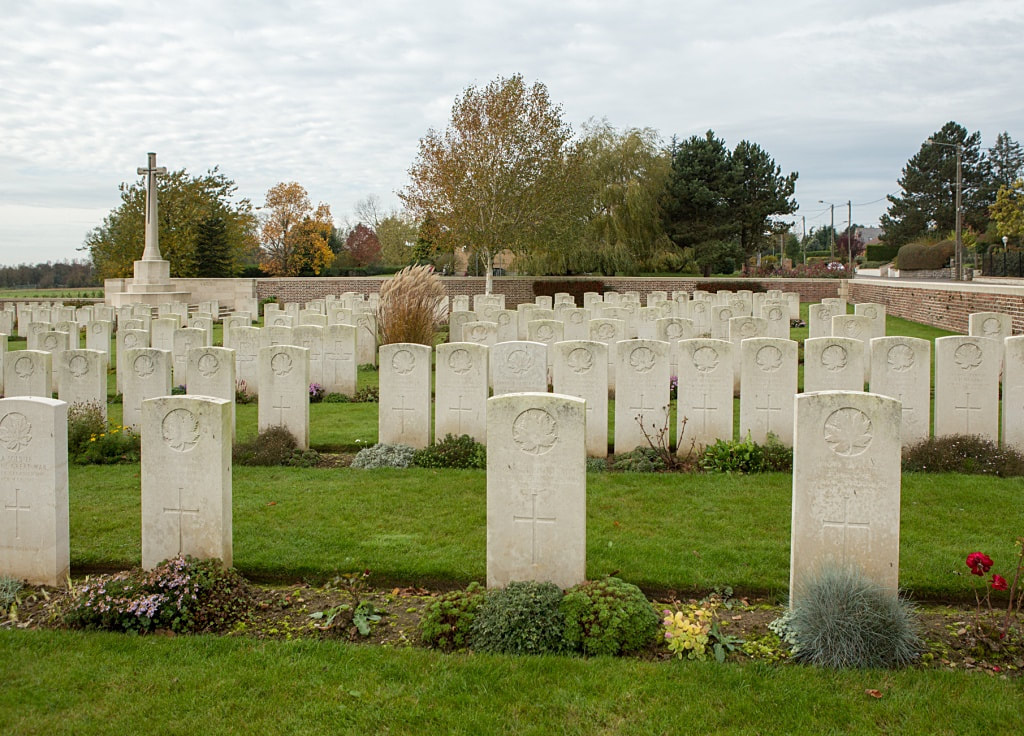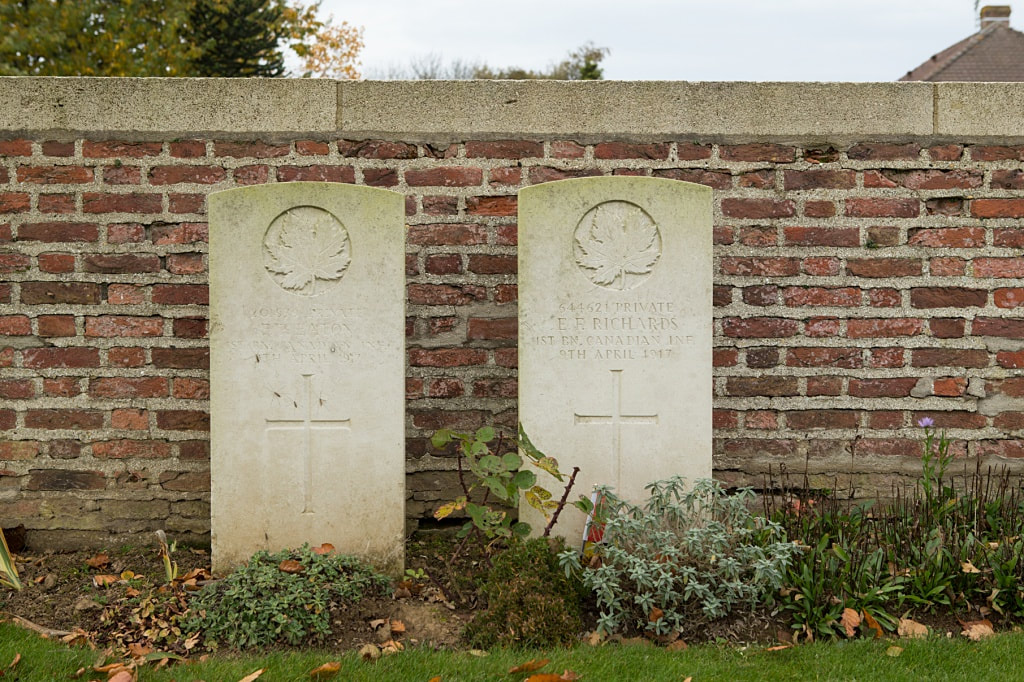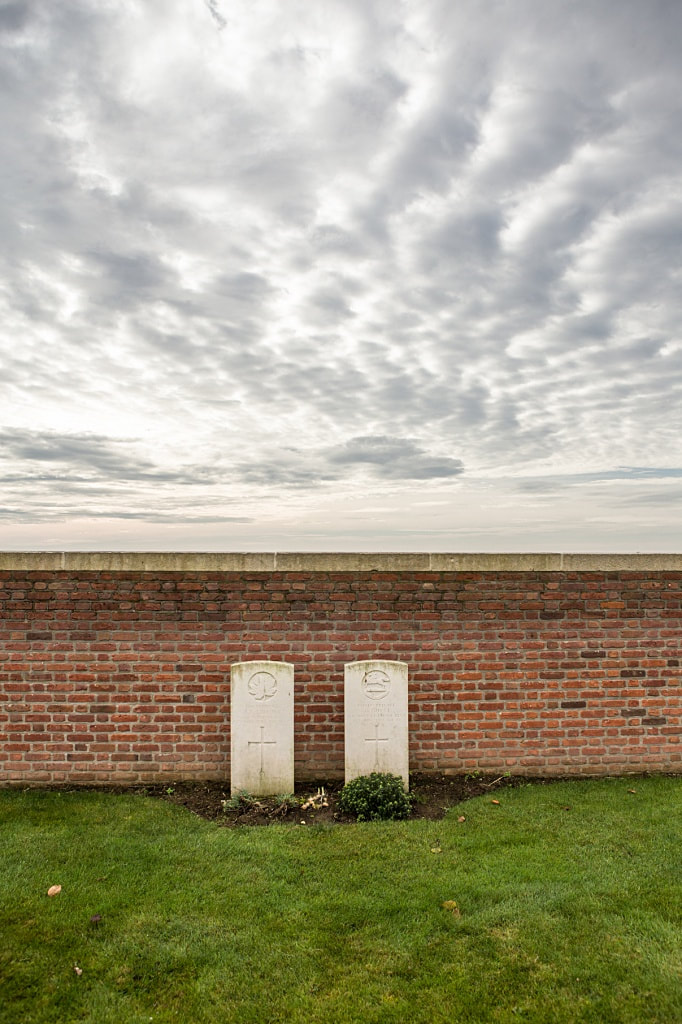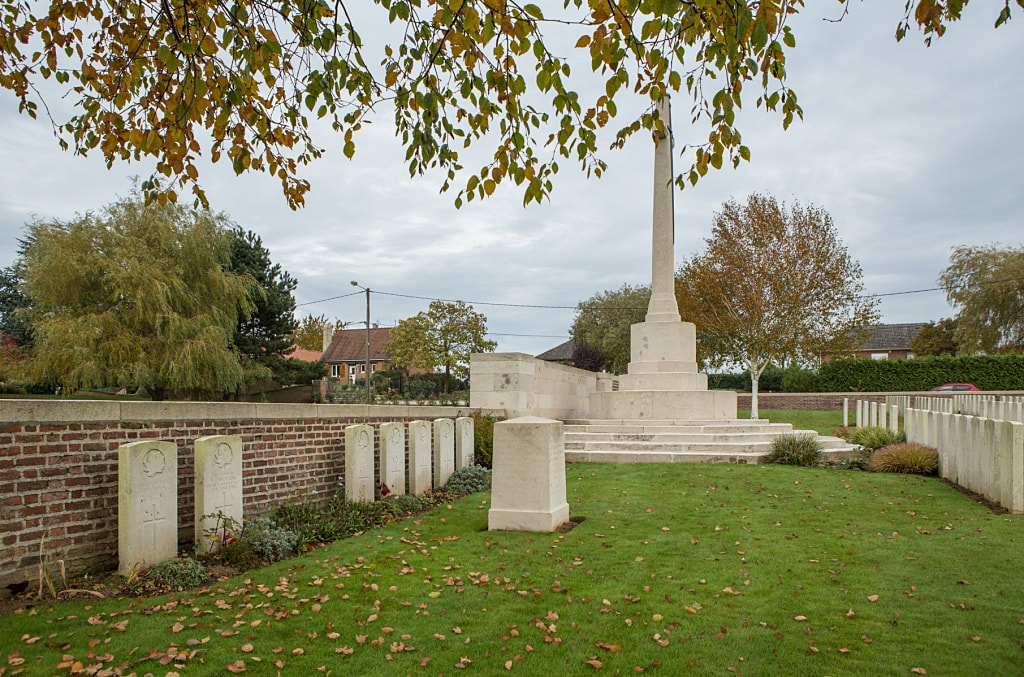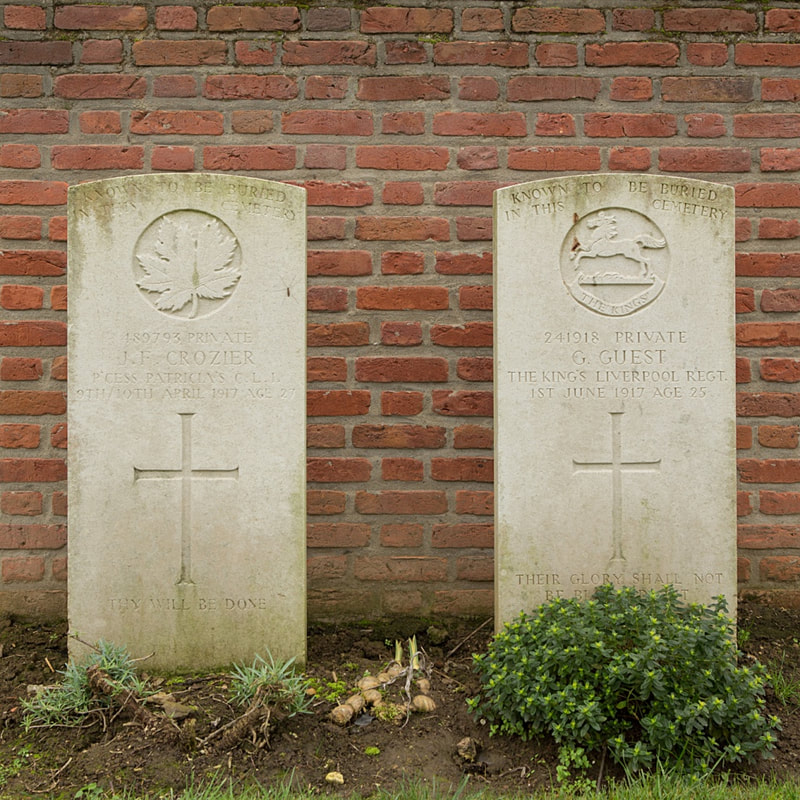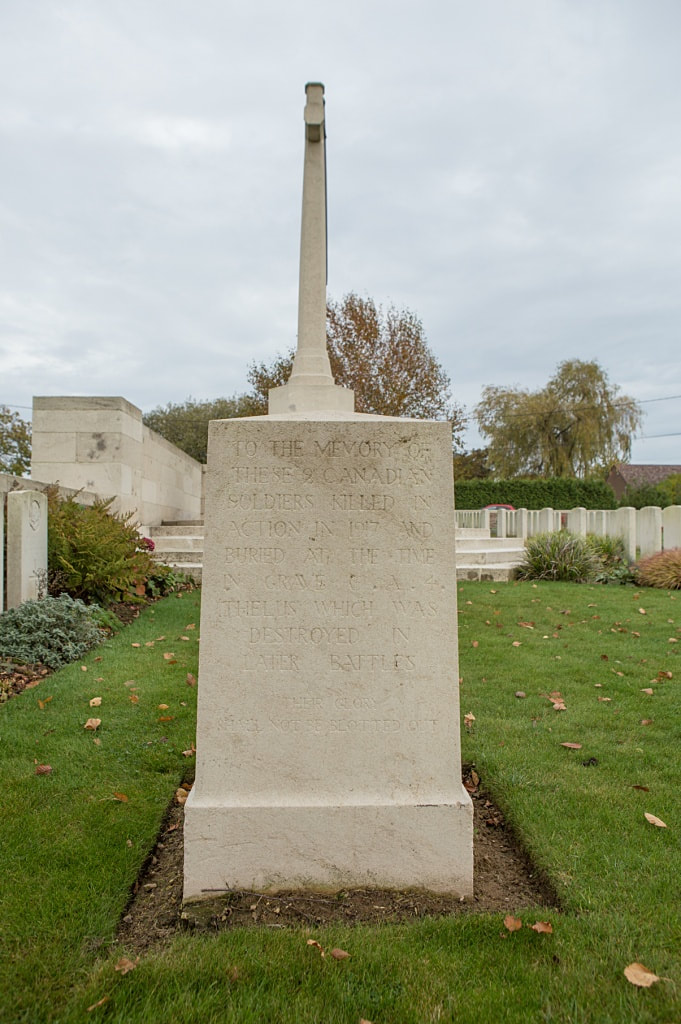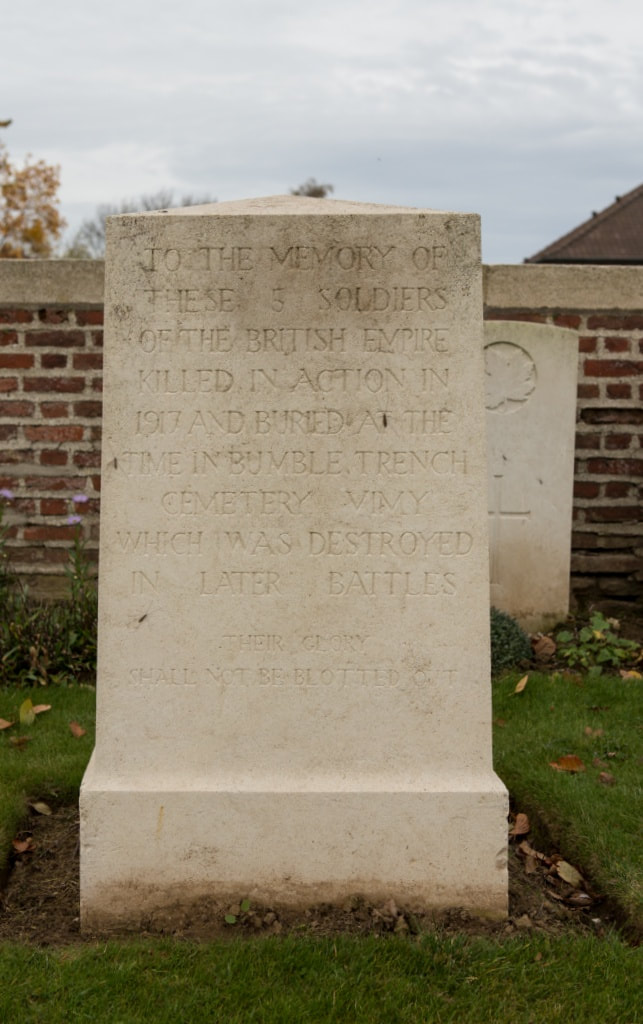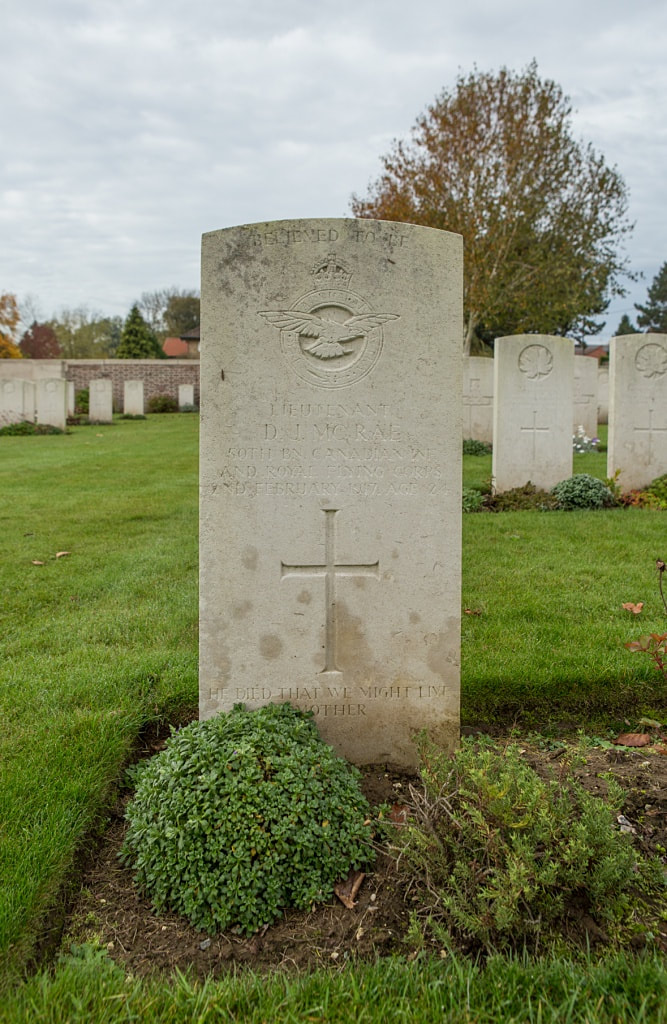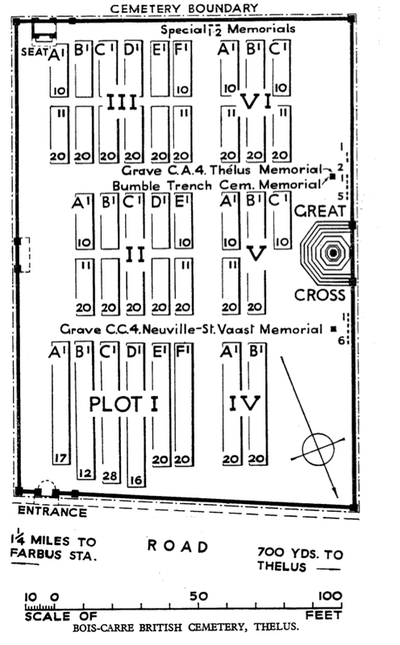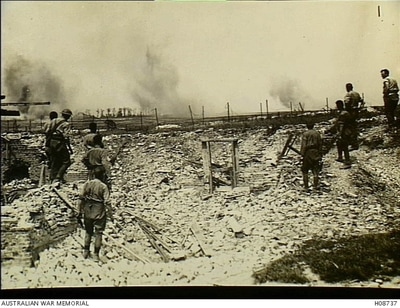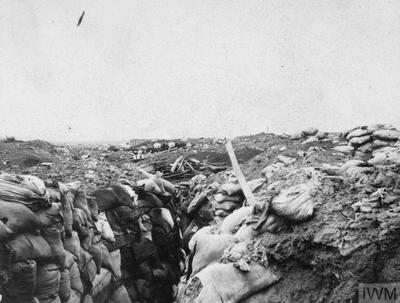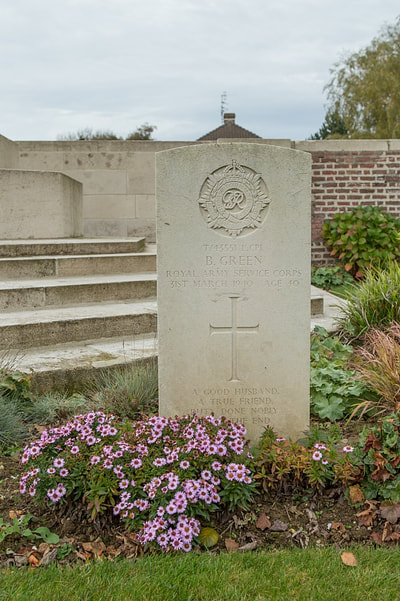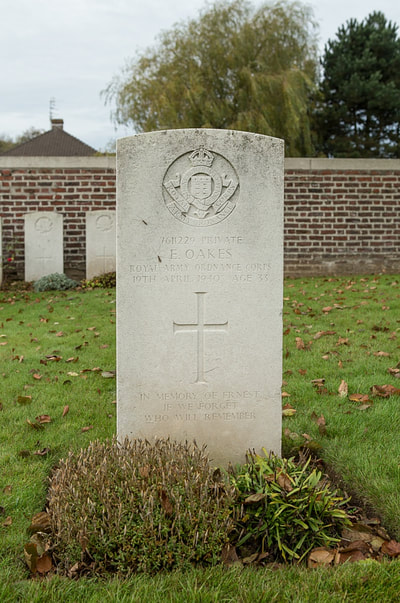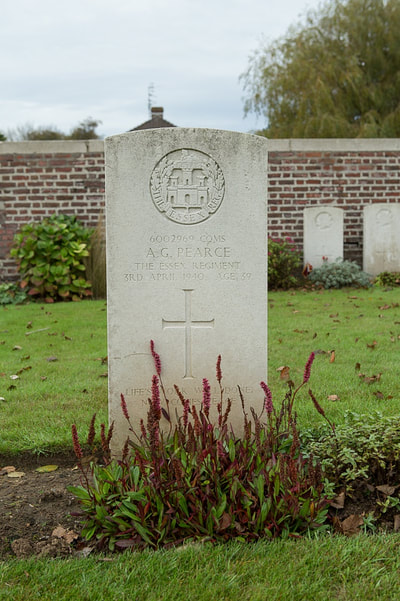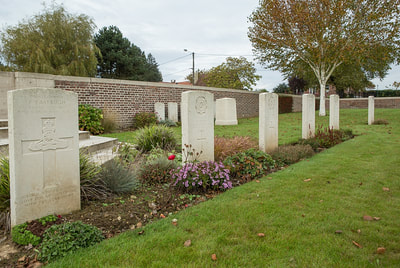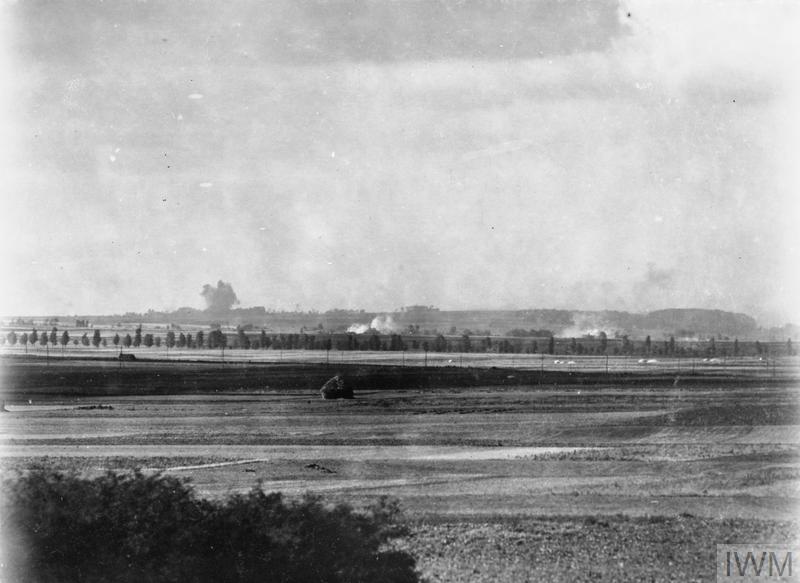BOIS-CARRÉ BRITISH CEMETERY
Thélus
Pas De Calais
France
GPS Coordinates: Latitude: 50.35125, Longitude: 2.81085
Location Information
Thelus is a village 7 kilometres north of Arras. Bois-Carré British Cemetery is 1 kilometre east of the village on the south side of the D49 road to Bailleul-sire-Berthoult.
Historical Information
Thélus village, which stands on the Vimy Ridge, was captured by the Canadian Corps on the 9th April, 1917, and it remained in British hands until the end of the War. The commune contains Battle Memorials of the 1st Canadian Division and (at Les Tilleuls) the Canadian Artillery.
Bois-Carré British Cemetery was begun by units of the 1st Canadian Division in April 1917, and used until the following June. These 61 graves are in Plot I (a Canadian soldier, accidentally killed in 1919, was also buried in Plot I, Row F). The cemetery was greatly enlarged after the Armistice by the concentration of graves from the surrounding battlefields and from following burial grounds:-
BUMBLE TRENCH CEMETERY, VIMY, (CC 186*) on the road from Vimy to Lens before the railway crossing. Here were buried, in May-August, 1917, nineteen Canadian soldiers and five from the United Kingdom.
CANADIAN GRAVE (CD 27*) NEUVILLE-ST. VAAST, 1,828 metres West of Petit-Vimy, in which 48 Canadian soldiers who fell on the 9th April, 1917, were buried; almost all belonged to the 54th and 102nd Battalions.
VIMY STATION CEMETERY, where 17 Canadian soldiers were buried in April and May, 1917.
*The numerous groups of graves made about this time by the Canadian Corps Burial Officer were, as a rule, not named but serially lettered and numbered.
During the 1939-40 War the cemetery was used in April, 1940, by No.8 Casualty Clearing Station.
There are 502, 1914-18 and 6, 1939-45 war casualties commemorated in this site. Of these, 59 from the 1914-18 War are unidentified and special memorials are erected to one soldier from the United Kingdom and one from Canada known to be buried among them. Other special memorials record the names of ten Canadian soldiers and three from the United Kingdom, buried in smaller cemeteries, whose graves were destroyed by shell fire.
The cemetery covers an area of 1,898 square metres and is enclosed by a brick wall.
The cemetery was designed by Sir Reginald Blomfield and William Harrison Cowlishaw
Total Burials: 508.
World War One Identified Casualties: Canada 338, United Kingdom 105. Total 443.
World War One Unidentified Casualties: Canada 44, United Kingdom 15. Total 59.
World War Two Identified Casualties: United Kingdom 6.
Thelus is a village 7 kilometres north of Arras. Bois-Carré British Cemetery is 1 kilometre east of the village on the south side of the D49 road to Bailleul-sire-Berthoult.
Historical Information
Thélus village, which stands on the Vimy Ridge, was captured by the Canadian Corps on the 9th April, 1917, and it remained in British hands until the end of the War. The commune contains Battle Memorials of the 1st Canadian Division and (at Les Tilleuls) the Canadian Artillery.
Bois-Carré British Cemetery was begun by units of the 1st Canadian Division in April 1917, and used until the following June. These 61 graves are in Plot I (a Canadian soldier, accidentally killed in 1919, was also buried in Plot I, Row F). The cemetery was greatly enlarged after the Armistice by the concentration of graves from the surrounding battlefields and from following burial grounds:-
BUMBLE TRENCH CEMETERY, VIMY, (CC 186*) on the road from Vimy to Lens before the railway crossing. Here were buried, in May-August, 1917, nineteen Canadian soldiers and five from the United Kingdom.
CANADIAN GRAVE (CD 27*) NEUVILLE-ST. VAAST, 1,828 metres West of Petit-Vimy, in which 48 Canadian soldiers who fell on the 9th April, 1917, were buried; almost all belonged to the 54th and 102nd Battalions.
VIMY STATION CEMETERY, where 17 Canadian soldiers were buried in April and May, 1917.
*The numerous groups of graves made about this time by the Canadian Corps Burial Officer were, as a rule, not named but serially lettered and numbered.
During the 1939-40 War the cemetery was used in April, 1940, by No.8 Casualty Clearing Station.
There are 502, 1914-18 and 6, 1939-45 war casualties commemorated in this site. Of these, 59 from the 1914-18 War are unidentified and special memorials are erected to one soldier from the United Kingdom and one from Canada known to be buried among them. Other special memorials record the names of ten Canadian soldiers and three from the United Kingdom, buried in smaller cemeteries, whose graves were destroyed by shell fire.
The cemetery covers an area of 1,898 square metres and is enclosed by a brick wall.
The cemetery was designed by Sir Reginald Blomfield and William Harrison Cowlishaw
Total Burials: 508.
World War One Identified Casualties: Canada 338, United Kingdom 105. Total 443.
World War One Unidentified Casualties: Canada 44, United Kingdom 15. Total 59.
World War Two Identified Casualties: United Kingdom 6.
Cemetery images in gallery below © Werner Van Caneghem
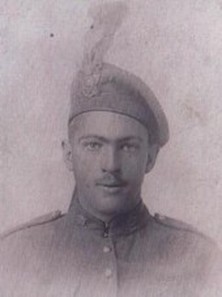
901766 Private
Herman Black
42nd Bn. Canadian Infantry, (Quebec Regiment)
9th July 1917
Plot V. B. 5.
Two excerpts from the book "Ghosts Have Warm Hands" by Will R. Bird, published in 1968 by Clarke, Irwin & Co. of Toronto relating to Herman Black
p. 12 " At dusk another sergeant came and led us to Neuville St. Vaast to join the battalion. It was January 3, 1917. We were told the place had once been a town built on chalk, but shell fire had reduced it to rubble. Soldiers occupied the cellars. We were divided into groups and eleven of us were shunted into a cellar, in whcih were timbers holding shreds of wires. They had been bunks once. Rats ran into holes as we lit candles and then came briefly back and stared at us. It was a cold and wet-smelling place. We sat on our packs and wondered. There was Arthur Burke, Herman Black, Laurie Bacon, Mel Baillie, Belliveau, Roy Baxter, Earle Black, Ira Black, brown, Mickey, and myself. Our guide had gone. Not an order had been given us, we knew nothing about the lines, where we drew rations, or what platoons we were supposed to be with."
p. 37. Recounting his death at Vimy Ridge "Herman Black had run amuck. They found him almost at the bottom of the Ridge, near a battery position, with eight dead Germans about him, four of them killed by bayonet."
Picture courtesy of great niece, Sandra Guinan
Herman Black
42nd Bn. Canadian Infantry, (Quebec Regiment)
9th July 1917
Plot V. B. 5.
Two excerpts from the book "Ghosts Have Warm Hands" by Will R. Bird, published in 1968 by Clarke, Irwin & Co. of Toronto relating to Herman Black
p. 12 " At dusk another sergeant came and led us to Neuville St. Vaast to join the battalion. It was January 3, 1917. We were told the place had once been a town built on chalk, but shell fire had reduced it to rubble. Soldiers occupied the cellars. We were divided into groups and eleven of us were shunted into a cellar, in whcih were timbers holding shreds of wires. They had been bunks once. Rats ran into holes as we lit candles and then came briefly back and stared at us. It was a cold and wet-smelling place. We sat on our packs and wondered. There was Arthur Burke, Herman Black, Laurie Bacon, Mel Baillie, Belliveau, Roy Baxter, Earle Black, Ira Black, brown, Mickey, and myself. Our guide had gone. Not an order had been given us, we knew nothing about the lines, where we drew rations, or what platoons we were supposed to be with."
p. 37. Recounting his death at Vimy Ridge "Herman Black had run amuck. They found him almost at the bottom of the Ridge, near a battery position, with eight dead Germans about him, four of them killed by bayonet."
Picture courtesy of great niece, Sandra Guinan
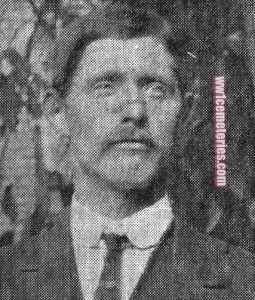
442952 Private
Malcolm Campbell
7th Bn. Canadian Infantry
26th April 1917
Plot I. D. 16.
Malcolm Campbell
7th Bn. Canadian Infantry
26th April 1917
Plot I. D. 16.
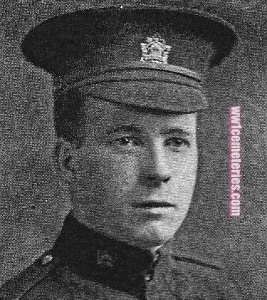
21470 Private
Frederick James Guy
Princess Patricia's Canadian Light Infantry (Eastern Ontario Regiment)
Between 09/04/1917 and 10/04/1917
Plot IV. A. 19.
Frederick James Guy
Princess Patricia's Canadian Light Infantry (Eastern Ontario Regiment)
Between 09/04/1917 and 10/04/1917
Plot IV. A. 19.
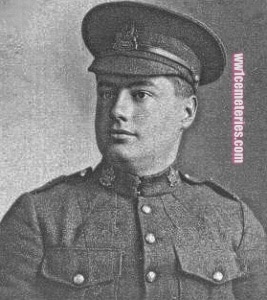
291445 Private
John Arthur Huntley
1st Canadian Mounted Rifles Battalion
Between 07/04/1917 and 10/04/1917, aged 23.
Plot III. B. 14.
Son of Isaac and Martha Huntley, of Butler, Manitoba.
John Arthur Huntley
1st Canadian Mounted Rifles Battalion
Between 07/04/1917 and 10/04/1917, aged 23.
Plot III. B. 14.
Son of Isaac and Martha Huntley, of Butler, Manitoba.
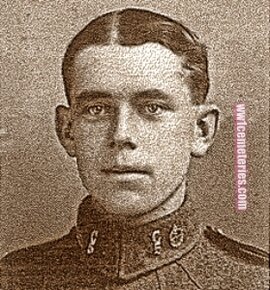
A/24164 Corporal
George Keech
5h Bn. Canadian Infantry
13th April 1917
Plot III. B. 4.
George Keech
5h Bn. Canadian Infantry
13th April 1917
Plot III. B. 4.
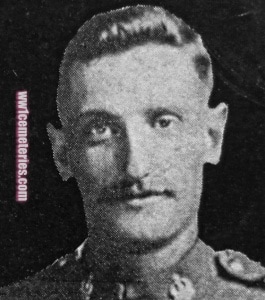
730672 Private
Arthur Turner
4th Bn. Canadian Infantry
11th April 1917
Plot I. C. 20.
Arthur Turner
4th Bn. Canadian Infantry
11th April 1917
Plot I. C. 20.
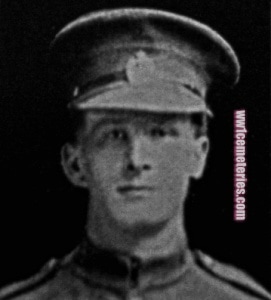
730497 Lance Corporal
John Yarrow
4th Bn. Canadian Infantry
30th April 1917
Plot I. D. 14.
John Yarrow
4th Bn. Canadian Infantry
30th April 1917
Plot I. D. 14.

